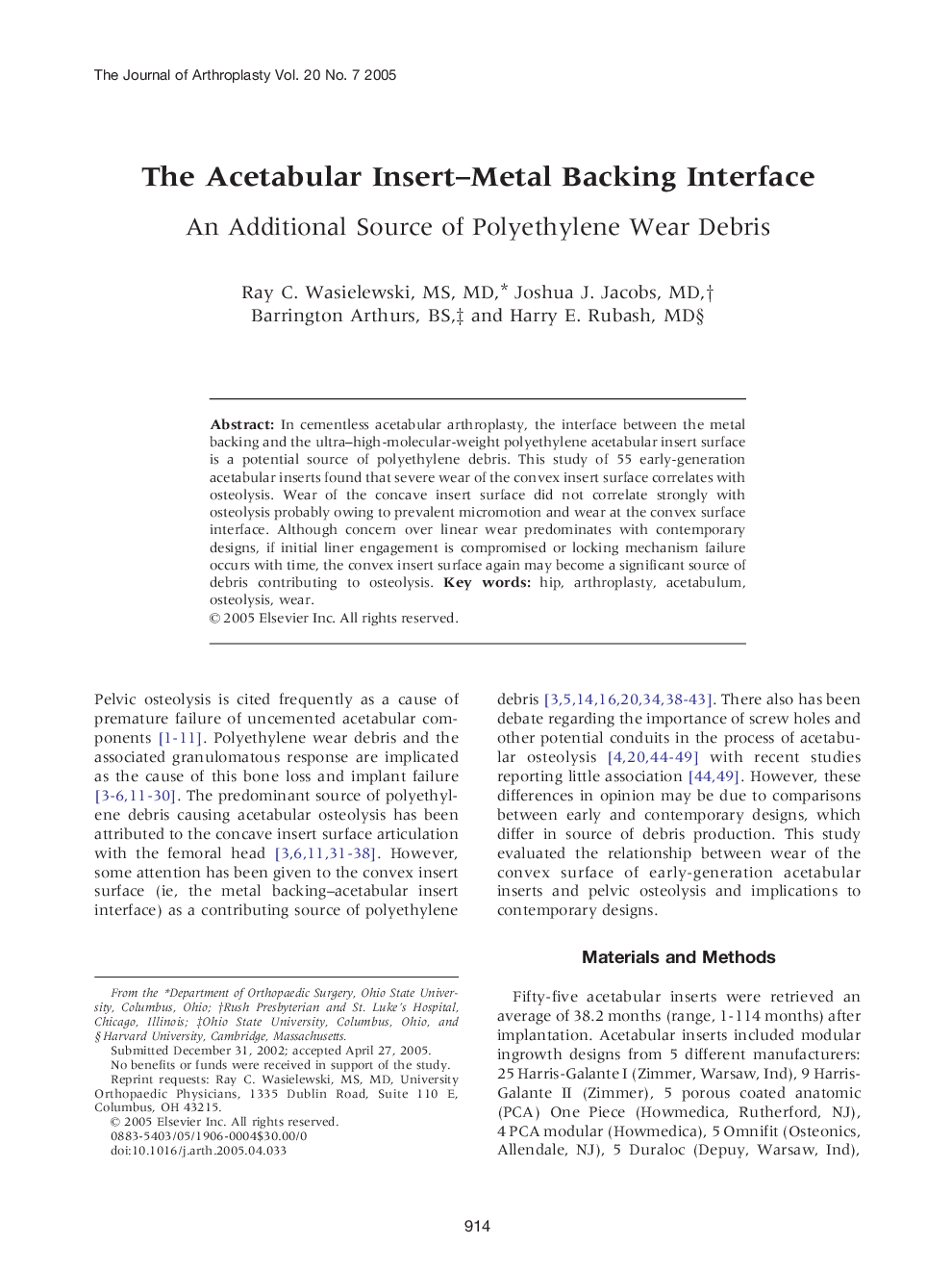| Article ID | Journal | Published Year | Pages | File Type |
|---|---|---|---|---|
| 10081669 | The Journal of Arthroplasty | 2005 | 9 Pages |
Abstract
In cementless acetabular arthroplasty, the interface between the metal backing and the ultra-high-molecular-weight polyethylene acetabular insert surface is a potential source of polyethylene debris. This study of 55 early-generation acetabular inserts found that severe wear of the convex insert surface correlates with osteolysis. Wear of the concave insert surface did not correlate strongly with osteolysis probably owing to prevalent micromotion and wear at the convex surface interface. Although concern over linear wear predominates with contemporary designs, if initial liner engagement is compromised or locking mechanism failure occurs with time, the convex insert surface again may become a significant source of debris contributing to osteolysis.
Related Topics
Health Sciences
Medicine and Dentistry
Orthopedics, Sports Medicine and Rehabilitation
Authors
Ray C. MS, MD, Joshua J. MD, Barrington BS, Harry E. MD,
